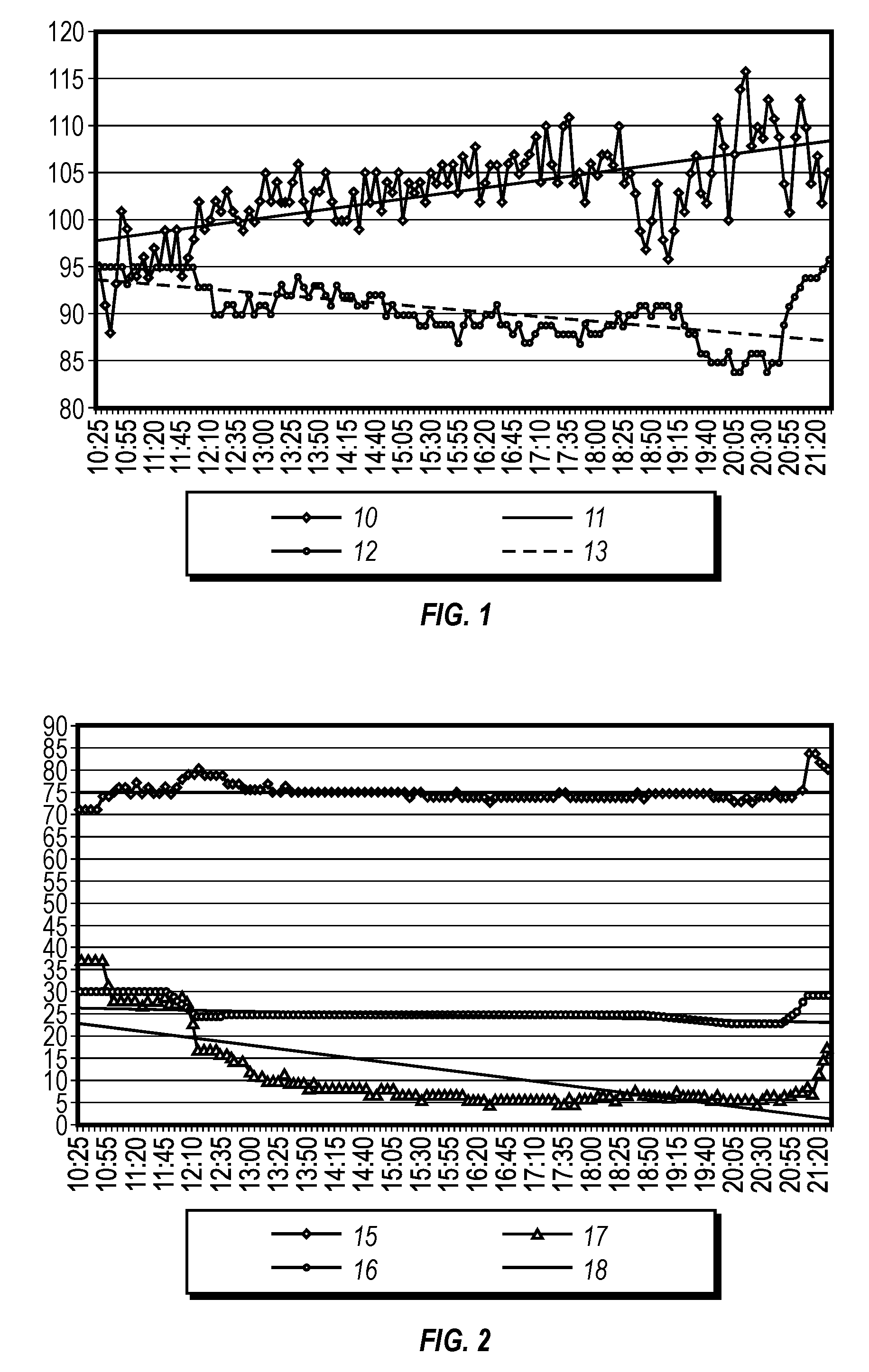System and method for aircraft cabin atmospheric composition control
a technology for atmospheric composition and aircraft cabin, which is applied in the direction of cosmonautic safety/emergency devices, fuselage bulkheads, cosmonautic crew accomodations, etc., can solve the problems of compensatory increases in heart and respiration rate, reduced respiratory effectiveness, and increased levels of blood clotting factors, so as to increase the partial pressure of oxygen, the effect of increasing the overall content of oxygen
- Summary
- Abstract
- Description
- Claims
- Application Information
AI Technical Summary
Benefits of technology
Problems solved by technology
Method used
Image
Examples
Embodiment Construction
[0033]FIGS. 1 and 2 graphically demonstrate easily monitored physiological reactions to airline flight. In the example of FIG. 1, a subject's heart rate 10 (linearized 11) is compared to experienced oxygen saturation levels 12 (linearized 13). Further details of the experienced cabin environment are illustrated in FIG. 2 where temperature 15, pressures 16 and relative humidity 17 (linearized 18) are tracked with respect to time for the trip of FIG. 1. The relationship of increasing heart rate to decreasing oxygen saturation levels is readily appreciated. This significant bodily reaction, however, goes substantially unnoticed by the passenger. A similar reaction is shown at sea level in FIG. 3 where heart rate 21 clearly tracks oxygen content (percentage basis 20, saturation basis 22) in the air.
[0034]Therefore, as described above, in one aspect the present invention constitutes raising the atmospheric concentration of oxygen within aircraft occupant compartments, without increasing ...
PUM
 Login to View More
Login to View More Abstract
Description
Claims
Application Information
 Login to View More
Login to View More - R&D
- Intellectual Property
- Life Sciences
- Materials
- Tech Scout
- Unparalleled Data Quality
- Higher Quality Content
- 60% Fewer Hallucinations
Browse by: Latest US Patents, China's latest patents, Technical Efficacy Thesaurus, Application Domain, Technology Topic, Popular Technical Reports.
© 2025 PatSnap. All rights reserved.Legal|Privacy policy|Modern Slavery Act Transparency Statement|Sitemap|About US| Contact US: help@patsnap.com



